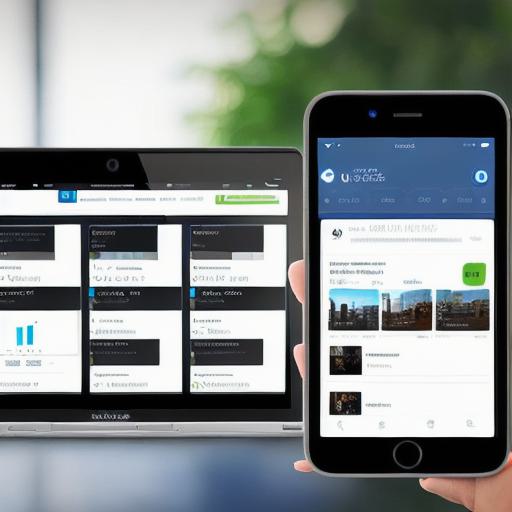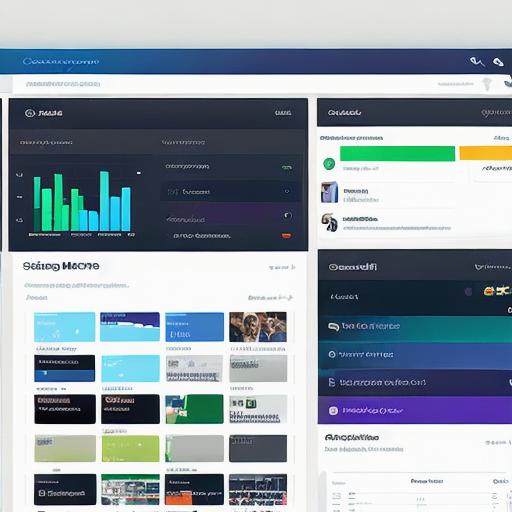Introduction:
In today’s fast-paced digital world, social media has become an essential tool for businesses to reach their target audience and grow their brand. With billions of active users on various platforms, social media provides a vast opportunity for businesses to connect with customers, build relationships, and increase sales. However, managing multiple social media accounts can be time-consuming and overwhelming, especially when it comes to creating engaging content, tracking analytics, and responding to customer inquiries. That’s where social media marketing tools come into play.
Social media marketing tools are designed to help businesses streamline their social media marketing efforts by providing a range of features such as scheduling posts, analyzing data, managing ads, and collaborating with team members. In this article, we will explore the top 5 social media marketing tools for businesses in 2021 that can help you optimize your social media strategy and achieve your business goals.
1. Hootsuite Insights:
Hootsuite Insights is a comprehensive social media management platform that allows businesses to manage all their social media accounts in one place. With Hootsuite, you can schedule posts across multiple platforms, monitor engagement metrics, and analyze data to track your performance over time. In addition, Hootsuite provides insights into your audience demographics, content preferences, and sentiment analysis.
One of the key features of Hootsuite is its analytics dashboard that allows businesses to track their social media performance across multiple channels. You can monitor metrics such as impressions, clicks, shares, and conversions to see how your content is resonating with your audience. Additionally, you can use Hootsuite’s analytics tools to identify trends in your data and make data-driven decisions to optimize your social media strategy.
Case Study:
Let’s take a look at an example of how Hootsuite helped a small business grow their social media presence. Sarah runs a bakery in a small town, and she wanted to increase her brand awareness and attract more customers. She started using Hootsuite Insights to manage her social media accounts and schedule posts across multiple platforms.
Sarah created engaging content that showcased her baked goods, shared customer testimonials, and promoted special offers. She also used Hootsuite’s analytics tools to track her performance and identify which types of content were driving the most engagement. Over time, Sarah saw a significant increase in her social media followers, website traffic, and sales.
2. Buffer:
Buffer is another popular social media management tool that allows businesses to schedule posts across multiple platforms. With Buffer, you can create a content calendar and schedule posts in advance, so you don’t have to worry about posting during business hours or on weekends. You can also collaborate with team members and assign tasks to specific team members, making it easy to manage your social media efforts.
Buffer provides analytics tools that allow businesses to track their social media performance across multiple channels. You can monitor metrics such as impressions, clicks, shares, and conversions to see how your content is resonating with your audience. Additionally, you can use Buffer’s analytics tools to identify trends in your data and make data-driven decisions to optimize your social media strategy.
Case Study:

A PLACE FOR A PICTURE #2
Let’s take a look at an example of how Buffer helped a marketing agency grow their social media presence. John runs a marketing agency that specializes in helping small businesses improve their online presence. He wanted to increase his agency’s brand awareness and attract more clients.
John started using Buffer to schedule posts across multiple platforms, share relevant content, and engage with his audience. He also used Buffer’s analytics tools to track his performance and identify which types of content were driving the most engagement. Over time, John saw a significant increase in his social media followers, website traffic, and client base.
3. Sprout Social:
Sprout Social is a comprehensive social media management platform that provides businesses with a range of features to manage their social media accounts. With Sprout, you can schedule posts across multiple platforms, monitor engagement metrics, and analyze data to track your performance over time. Additionally, Sprout provides insights into your audience demographics, content preferences, and sentiment analysis.
One of the key features of Sprout Social is its analytics dashboard that allows businesses to track their social media performance across multiple channels. You can monitor metrics such as impressions, clicks, shares, and conversions to see how your content is resonating with your audience. Additionally, you can use Sprout’s analytics tools to identify trends in your data and make data-driven decisions to optimize your social media strategy.
Case Study:
Let’s take a look at an example of how Sprout Social helped a fashion brand grow their social media presence. Lisa runs a fashion brand that specializes in sustainable clothing. She wanted to increase her brand awareness and attract more customers.
Lisa started using Sprout Social to manage her social media accounts and schedule posts across multiple platforms. She created engaging content that showcased her sustainable clothing, shared customer testimonials, and promoted special offers. Lisa also used Sprout’s analytics tools to track her performance and identify which types of content were driving the most engagement. Over time, Lisa saw a significant increase in her social media followers, website traffic, and sales.
4. Later:
Later is a social media management tool that specializes in Instagram marketing. With Later, you can create a content calendar, schedule posts in advance, and collaborate with team members. Additionally, Later provides analytics tools that allow businesses to track their performance on Instagram.
One of the key features of Later is its visual content calendar that allows businesses to plan out their Instagram content in advance. You can see all your scheduled posts in one place and easily drag and drop them to different days or times. Later also provides insights into your audience demographics, content preferences, and sentiment analysis.
Case Study:
Let’s take a look at an example of how Later helped a travel blogger grow their Instagram presence. Sarah is a travel blogger who wants to increase her followers and attract more sponsorships. She started using Later to plan out her Instagram content in advance and schedule posts across multiple platforms.
Sarah created engaging content that showcased her travels, shared tips and tricks, and promoted sponsored posts. She also used Later’s analytics tools to track her performance and identify which types of content were driving the most engagement. Over time, Sarah saw a significant increase in her Instagram followers, website traffic, and sponsorships.
5. Canva:
Canva is a graphic design tool that allows businesses to create engaging visual content for their social media accounts. With Canva, you can create custom graphics, images, and videos that align with your brand’s visual identity. Additionally, Canva provides templates and resources that make it easy to create professional-looking designs without needing any design experience.
One of the key features of Canva is its drag-and-drop design editor that allows businesses to create custom graphics and images quickly and easily. You can choose from a range of templates, fonts, and colors to create designs that align with your brand’s visual identity. Additionally, Canva provides analytics tools that allow businesses to track their performance on social media.
Case Study:
Let’s take a look at an example of how Canva helped a small business grow their social media presence. Tom runs a coffee shop in a busy city, and he wanted to increase his brand awareness and attract more customers.
Tom started using Canva to create engaging visual content for his social media accounts. He created custom graphics that showcased his coffee and promotional images that attracted new customers. Additionally, Tom used Canva’s analytics tools to track his performance and identify which types of content were driving the most engagement. Over time, Tom saw a significant increase in his social media followers, website traffic, and sales.
Conclusion:
In conclusion, these five social media management tools are essential for businesses that want to grow their social media presence and attract more customers. Each tool provides unique features that make it easy to manage your social media accounts, create engaging content, and track your performance on social media. By using these tools, businesses can optimize their social media strategy and achieve their marketing goals.




